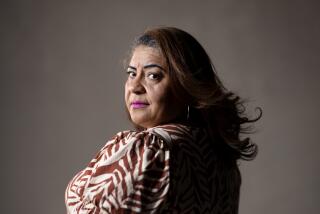Valley Perspective : SECOND OPINIONS : Teachers Can’t Do Their Best Work in Meetings : Joining the decision-making process was a good idea, time on committees is not. Classroom duties grow, and it should be principals who handle the red tape.
“Beware of what you wish for--you might get it.”
Los Angeles teachers should have kept that in mind when we went on strike in May 1989. Teachers came off the picket line with a pay raise and the district’s promise to establish school leadership councils.
SLCs, as they are referred to, consist of teachers, support staff, parents and administrators. They are charged with determining discipline policy, setting schedules for special assemblies and other events, and budgeting textbook funds and instructional material monies, among other tasks.
In the years I served on the SLC at two high schools, meetings often became heated, lasted for hours after school, and not infrequently set teacher against principal, and sometimes teacher against teacher. Decisions surrounding Open House always became heated. Do we have Open House during the day, in the afternoon or in early evening? Debates continued between scheduled council meetings. Elections for membership meant divided loyalties, jealousy over perceived power, charges of “he (or she) is acting like an administrator,” and still more meetings.
Schools with SLCs that worked well chose to become school-based management sites (SBMs), taking on even more responsibilities, including the hiring of new personnel and the bestowing of special assignments and paid coordinators. More meetings.
In the past two years, some SLC and school-based management site schools have become LEARN schools. LEARN means more of the responsibilities for running a school are shared by the stakeholders--teachers, staff, students, parents and administrators. They do this at still more meetings.
At every school site a handful of teachers and parents are always involved, while 90% or more of their counterparts remain, by choice, outside the meeting-room door. For those of us who participate, there is a sense of increased control and power, a stronger commitment to education beyond the classroom. After so many years of being downtrodden, it’s heady for teachers to become the establishment.
Teachers asked for more power in 1989 and we got it. So, what’s the problem? The problem is that every hour we spend at an administrative-type meeting is one less hour we have to prepare for classes, comment on student essays, advise student club and extracurricular activities, or recharge our batteries.
Teachers, staff and parents now make decisions, albeit minor ones, formerly reserved for administrators--but the same number of administrators are still in place, still on payroll, while teachers’ workloads have not been reduced to allow for their increased out-of-classroom duties. In fact, class size has grown across the board in the past few years.
What we have now is leadership by committee. That means nobody really takes charge. Principals can sidestep important issues, saying, “I’ll bring it to the committee.” Committee members can enact rules, but are too busy in their classrooms to carry them out.
Bottom line: Have all these committee meetings, including the hundred or more in which I’ve participated, led to a measurable increase in student achievement? Increased standardized test scores? Reduced dropout rates? The answer is no. The expectation of SLC-run schools to improve student learning hasn’t materialized.
*
Although I applaud the principle behind SLC in all its forms, I don’t want to sit on another committee or make another decision that doesn’t directly concern my classroom.
So what do I and thousands of other teachers want? I don’t think we want more power. We certainly don’t want more meetings on top of already back-breaking student loads. What we do want is to be able to do what we do well--work in our classrooms with a manageable number of students, have the supplies we need, and leave the running of the school, with minimal input, in the hands of competent administrators paid to make decisions.
Extraordinary principals can do amazing things. A principal can raise morale or lower it; reward outstanding teachers; foster a climate for innovative classroom practices; set high standards for the hiring of new teachers; set equally high standards for students; search for alternative programs so the needs of all students can be served; and run interference whenever necessary so teachers and programs don’t get bogged down in red tape.
If we continue to agree that our bottom line is increased student achievement, and if six years of shared decision-making hasn’t accomplished that, then it may be time to change courses once again.
I’d trade the SLCs, SBMs and LEARN program and all the meetings they require for strong principals and assistant principals on renewable two-year contracts with the schools they serve, who are committed first to supporting teachers, classrooms and students.
More to Read
Sign up for Essential California
The most important California stories and recommendations in your inbox every morning.
You may occasionally receive promotional content from the Los Angeles Times.










